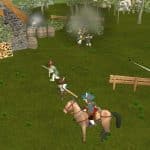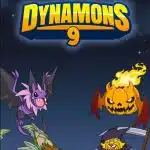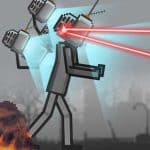Battle Games – Tactical Combat and Competitive Gameplay for All
Kampfspiele are action-driven experiences where players engage in combat, strategic planning, and competitive play. From head-to-head fighting games to large-scale online battles, this genre offers something for everyone. Players can enjoy a variety of gameplay styles, including tactical decision-making, skill-based combat, and cooperative teamwork.
The Evolution of Battle Games: From Classic Arcades to Modern Warfare 🎯
Battle games have been around since the early days of video gaming. The journey began with arcade titles like Street Fighter II in the early 1990s, which introduced new gameplay mechanics like combo attacks and Multiplayer modes. As gaming technology advanced, developers started creating games that emphasized strategic thinking and large-scale combat.
In the late 1990s and early 2000s, real-time strategy (RTS) games, such as StarCraft and Age of Empires, gained popularity. These titles focused on resource management, tactical decision-making, and planning, drawing in players who enjoyed strategy-based gameplay.
The rise of first-person shooters (FPS) wie Counter-Strike und Ruf der Pflicht added a new layer of competitiveness. These games prioritized skill, quick reflexes, and teamwork, attracting a large player base. Later, the introduction of Battle Royale Spiele such as Vierzehn Tage und PUBG brought new gameplay styles, where survival and adaptability played key roles.
Why Battle Games Appeal to So Many Players 🌍
Battle games have a wide-reaching appeal because they offer something for nearly every type of player:
- Competitive Gameplay: Many people enjoy testing their abilities against others in structured environments.
- Strategic Elements: Games that reward planning and tactical thinking attract those who enjoy careful decision-making.
- Cooperative Play: Team-based modes encourage collaboration and communication, making them popular among friends.
- Skill Progression: Progression systems in many battle games motivate players to keep improving and achieving new milestones.
- Variety of Combat Styles: Whether it’s close combat, long-range attacks, or strategy-focused gameplay, battle games cater to diverse interests.
Key Features of Battle Games 🗡️
The genre stands out for its diverse range of mechanics and systems, which make gameplay both engaging and challenging. Some of the key elements include:
- Combat Systems: Whether players prefer hand-to-hand combat, weapons, or magical abilities, the core of battle games involves skillful fighting.
- Resourcenmanagement: Many Strategiespiele require players to gather resources, build units, and maintain their forces effectively.
- Multiplayer Options: Cooperative and competitive modes allow players to connect with friends or challenge others from around the world.
- Progression Systems: Unlockable skills, weapons, and characters give players new goals to reach.
- Environments: Games often provide maps that change or adapt, encouraging players to adjust their strategies.
Popular Sub-Genres of Battle Games 🎮
The broad category of battle games includes several well-defined sub-genres that offer different experiences:
- Kampfspiele: These focus on one-on-one or team-based combat, where each character has unique abilities and moves. Examples include Tekken, Straßenkämpfer, und Mortal Kombat.
- First-Person Shooters (FPS): Players engage in combat through a first-person perspective, relying on accuracy, quick reactions, and strategic positioning. Popular titles include Ruf der Pflicht und Battlefield.
- Battle Royale: Dozens or even hundreds of players compete to be the last person standing. Games like Vierzehn Tage und Apex Legends have popularized this format.
- Real-Time Strategy (RTS): These games emphasize tactics, resource management, and strategic planning. Classic titles include StarCraft und Age of Empires.
- Multiplayer Online Battle Arena (MOBA): Teams of players control different heroes with unique abilities, working together to achieve objectives. Examples include League of Legends und Dota 2.
Who Enjoys Battle Games? 🧩
Battle games appeal to a wide range of players due to their diversity in gameplay styles and objectives. The genre has something for everyone, including:
- Competitive Players: Those who thrive in skill-based matches and aim to climb leaderboards.
- Strategists: Individuals who prefer planning and managing resources to achieve victory.
- Gelegenheitsspieler: Players looking for short, engaging matches that fit easily into their daily routine.
- Team-Oriented Players: People who enjoy coordinating with friends or teammates to reach common goals.
Recent Trends in Battle Games 🔥
The genre continues to evolve, incorporating new technologies and gameplay mechanics:
- Cross-Platform Play: Allowing players from different devices to compete or cooperate in the same game.
- Esports Growth: Battle games often feature prominently in esports competitions, drawing large audiences and generating considerable interest.
- Improved Matchmaking: Systems that connect players with similar skill levels provide fairer and more balanced gameplay.
- Customization Options: Developers are increasingly offering personalization features for characters, weapons, and environments.
- Frequent Updates: Regular patches, new content, and gameplay improvements keep communities active and invested.
Why Battle Games Continue to Grow in Popularity 🌟
Battle games attract players with their mix of competition, strategy, and skill progression. Some enjoy the thrill of overcoming difficult opponents, while others prefer the satisfaction of outsmarting their rivals through clever tactics. The ability to improve over time and achieve higher ranks or unlock better equipment keeps players coming back.
These games also provide various social benefits. Team-based modes encourage collaboration and communication, building communities both online and offline. Whether playing casually or striving for high-level mastery, battle games offer something valuable to all types of players.
































































































































